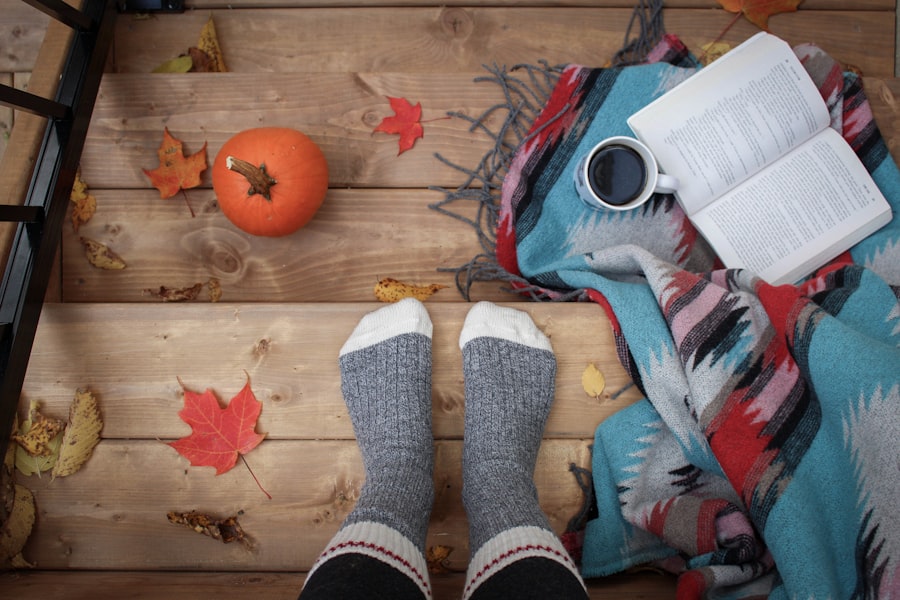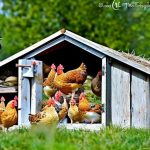Maintaining warmth for chickens during cold seasons is crucial for poultry farmers, and various methods can be employed to achieve this. Straw bedding in chicken coops is a widely used and effective technique that has been utilized for centuries as a natural insulator. This article examines the insulating properties of straw, its heat retention capabilities, and its practical application in keeping chickens warm during winter.
The discussion will cover the importance of proper ventilation and moisture control when using straw for warmth, as well as provide practical tips for its effective use. Additionally, potential drawbacks and considerations associated with using straw for warmth in chicken coops will be addressed. By exploring these aspects, poultry farmers can make informed decisions about using straw as a method to keep their chickens comfortable and healthy during colder months.
Table of Contents
- 1 The insulating properties of straw and its ability to retain heat
- 2 How straw can create a cozy and warm environment for chickens during colder months
- 3 The importance of proper ventilation and moisture control when using straw for warmth
- 4 Tips for effectively using straw to keep chickens warm
- 5 Potential drawbacks or considerations when using straw for warmth in chicken coops
- 6 Conclusion and final thoughts on the use of straw for keeping chickens warm
- 7 FAQs
Key Takeaways
- Using straw for chicken bedding is a common practice to provide warmth and insulation in colder months.
- Straw has excellent insulating properties and can retain heat, creating a cozy environment for chickens.
- Proper ventilation and moisture control are crucial when using straw for warmth to prevent mold and ammonia buildup.
- Tips for effectively using straw include regularly fluffing and replacing it, and using deep litter methods for added insulation.
- Potential drawbacks of using straw for warmth include the risk of fire and the need for regular maintenance to prevent health hazards for chickens.
The insulating properties of straw and its ability to retain heat
Cost-Effective and Natural
Additionally, straw is a natural material that is readily available and cost-effective, making it an attractive option for poultry farmers looking to keep their chickens warm without breaking the bank. By utilizing the insulating properties of straw, poultry farmers can create a comfortable and cozy environment for their chickens, ensuring that they stay warm and healthy throughout the winter.
Insulating Properties
Straw’s ability to retain heat is another key factor in its effectiveness as a bedding material for keeping chickens warm. When properly fluffed and spread out in the coop, straw can create a thick layer that acts as a buffer against cold temperatures. This layer of insulation helps to prevent drafts and cold air from seeping into the coop, keeping the interior temperature stable and comfortable for the chickens.
Ideal Environment
Additionally, the natural moisture-wicking properties of straw help to keep the bedding dry, which is essential for maintaining warmth. By retaining heat and preventing moisture buildup, straw can create an ideal environment for chickens to thrive during the colder months.
How straw can create a cozy and warm environment for chickens during colder months

In addition to its insulating properties, straw can create a cozy and warm environment for chickens during the colder months. The soft and fluffy texture of straw provides a comfortable surface for chickens to rest and nest on, helping to keep them warm and content. This is especially important for hens that may be laying eggs during the winter, as they require a warm and comfortable nesting area to encourage healthy egg production.
By providing a layer of straw bedding in the coop, poultry farmers can ensure that their chickens have a cozy and inviting space to roost and lay eggs, even when temperatures drop outside. Furthermore, the natural odor-absorbing properties of straw can help to keep the coop smelling fresh and clean, creating a pleasant environment for both chickens and their caretakers. This is particularly beneficial during the winter months when coops may be closed up more frequently to retain heat.
By using straw as bedding, poultry farmers can create a warm and inviting space for their chickens while also minimizing odors and maintaining a clean living environment. Overall, the use of straw in chicken coops can contribute to a cozy and warm atmosphere that promotes the health and well-being of the flock during the colder months.
The importance of proper ventilation and moisture control when using straw for warmth
While straw can be an effective tool for keeping chickens warm during the winter, it is important to prioritize proper ventilation and moisture control when using this bedding material. Without adequate ventilation, moisture from chicken droppings and respiration can accumulate in the coop, leading to damp bedding and potential health issues for the flock. To prevent this, poultry farmers should ensure that their coops are well-ventilated to allow for proper air circulation and moisture evaporation.
This can be achieved through the use of windows, vents, or fans to maintain a dry and healthy environment inside the coop. Additionally, proper moisture control is essential when using straw for warmth in chicken coops. While straw has natural moisture-wicking properties, it is still important to regularly monitor the bedding for signs of dampness or mold growth.
Poultry farmers should regularly fluff and turn over the straw bedding to promote airflow and prevent moisture buildup. If damp spots are detected, these areas should be removed and replaced with fresh straw to maintain a dry and comfortable environment for the chickens. By prioritizing proper ventilation and moisture control, poultry farmers can effectively use straw to keep their chickens warm without compromising their health and well-being.
Tips for effectively using straw to keep chickens warm
To effectively use straw to keep chickens warm during the colder months, there are several tips that poultry farmers can follow. First, it is important to provide a thick layer of straw bedding in the coop to create a substantial barrier against cold temperatures. This layer should be regularly fluffed and turned over to maintain its insulating properties and prevent moisture buildup.
Additionally, placing extra straw in nesting boxes can provide hens with a warm and comfortable space to lay eggs during the winter. Furthermore, poultry farmers should regularly monitor the condition of the straw bedding to ensure that it remains dry and clean. Any damp or soiled areas should be promptly removed and replaced with fresh straw to maintain a healthy living environment for the chickens.
Finally, proper ventilation should be prioritized to prevent moisture buildup and promote air circulation within the coop. By following these tips, poultry farmers can effectively use straw to keep their chickens warm and comfortable throughout the winter months.
Potential drawbacks or considerations when using straw for warmth in chicken coops

Dust and Allergens
One consideration is the potential for dust and allergens associated with straw bedding, which may pose respiratory issues for both chickens and caretakers. To mitigate this risk, poultry farmers should use dust-free or low-dust straw varieties and regularly clean and replace bedding as needed.
Pest Infestations and Behavioral Issues
Another consideration is the potential for pests such as mites or rodents to take up residence in straw bedding. Poultry farmers should regularly inspect the bedding for signs of pests and take appropriate measures to prevent infestations. Additionally, some chickens may be prone to eating or scratching at straw bedding, which can lead to digestive issues or injuries. To prevent this, poultry farmers should monitor their flock’s behavior around the bedding and provide alternative enrichment activities to keep them occupied.
Insulation Limitations
While straw is an effective insulator, it may not be sufficient on its own to keep chickens warm in extremely cold climates. In these cases, additional heating sources or alternative bedding materials may be necessary to ensure that chickens remain comfortable and healthy.
By considering these potential drawbacks and taking appropriate measures, poultry farmers can effectively use straw to keep their chickens warm while minimizing any associated risks.
Conclusion and final thoughts on the use of straw for keeping chickens warm
In conclusion, straw can be a valuable tool for keeping chickens warm during the colder months due to its insulating properties, ability to retain heat, and capacity to create a cozy environment for the flock. By utilizing proper ventilation and moisture control, poultry farmers can effectively use straw as bedding in chicken coops to maintain a comfortable living environment for their chickens throughout the winter. While there are potential drawbacks or considerations associated with using straw for warmth, these can be mitigated through careful monitoring and proactive management.
Overall, straw remains a cost-effective and natural option for keeping chickens warm during the winter months, providing a comfortable and inviting space for them to thrive. By following best practices and considering potential drawbacks, poultry farmers can harness the benefits of straw bedding to ensure that their chickens stay healthy, happy, and warm throughout the colder seasons.
If you’re interested in learning more about how to keep chickens warm, you may want to check out this article on how to insulate a chicken coop. It provides helpful tips and techniques for keeping your chickens cozy during the colder months.
FAQs
What is the purpose of using straw for chickens?
Straw can be used as bedding material in chicken coops to provide insulation, absorb moisture, and create a comfortable environment for the chickens.
Does straw keep chickens warm?
Yes, straw can help keep chickens warm by providing insulation and trapping heat within the coop. It also helps to block drafts and maintain a consistent temperature.
How should straw be used to keep chickens warm?
Straw should be spread evenly on the floor of the chicken coop to create a thick layer of insulation. It should be regularly replaced to maintain its effectiveness.
Are there any drawbacks to using straw for chickens?
While straw can provide insulation and warmth, it can also attract pests such as mites and rodents if not properly managed. It’s important to regularly clean and replace the straw to prevent these issues.
What are some alternative bedding materials for chickens?
Some alternative bedding materials for chickens include wood shavings, shredded paper, and hemp bedding. These materials also provide insulation and absorb moisture.
Meet Walter, the feathered-friend fanatic of Florida! Nestled in the sunshine state, Walter struts through life with his feathered companions, clucking his way to happiness. With a coop that’s fancier than a five-star hotel, he’s the Don Juan of the chicken world. When he’s not teaching his hens to do the cha-cha, you’ll find him in a heated debate with his prized rooster, Sir Clucks-a-Lot. Walter’s poultry passion is no yolk; he’s the sunny-side-up guy you never knew you needed in your flock of friends!







